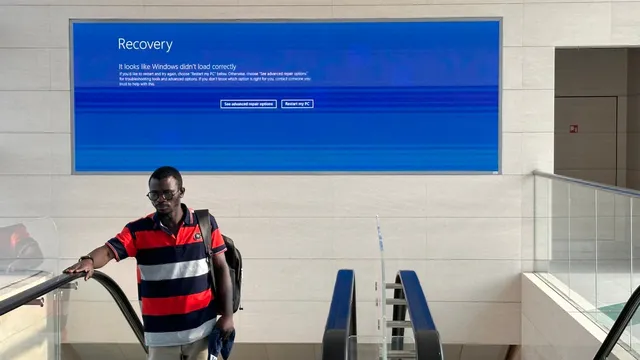
Microsoft ends the blue screen of death era in Windows
2025-06-27 03:25- Microsoft is introducing a black screen of death to replace the longstanding blue screen of death.
- This change aims to improve recovery processes and user experience following unexpected system restarts.
- The decision to remove the blue screen follows a major global outage that revealed weaknesses in Windows security.
Express your sentiment!
Insights
In June 2025, Microsoft announced that it will eliminate the iconic blue screen of death, a feature that has plagued Windows users for nearly 40 years. The company has decided to introduce a black screen as its replacement, marking a significant shift in the user experience of Windows operating systems. This change comes as part of a series of modifications designed to enhance system resilience and reduce disruptions caused by unexpected restarts. Additionally, Microsoft indicated that this decision was influenced by a major global outage that occurred almost a year prior due to a faulty update from the cybersecurity firm CrowdStrike. This incident affected millions of users, with significant impacts on aviation, healthcare, emergency services, and financial institutions, ultimately costing companies billions of dollars in lost productivity and functionality. As a response to the vulnerabilities exposed by this incident, Microsoft is streamlining the recovery process for devices that fail to boot successfully. Enhancements such as the quick machine recovery (QMR) system are being implemented to address these issues. The new features are set to be rolled out to Windows 11, version 24H2 users later in the summer of the same year, alongside a user interface redesign aimed at clarity and better conveyance of troubleshooting information. Microsoft strives to minimize wait times during restarts to enhance the user experience, with a pledge to make addressing errors quicker and more efficient. The overall intention behind these changes is to cultivate a more robust and user-friendly operating system that can safeguard against disruptive events in the future, thereby improving productivity and business continuity.
Contexts
Microsoft has committed to enhancing its cyber resilience by implementing a comprehensive approach that addresses the multifaceted nature of cyber threats. In a world where digital transformation is prevalent, the necessity for robust cybersecurity measures has never been more critical. Microsoft recognizes that cyber resilience is not merely about having the right tools in place but also involves fostering a culture of security awareness, preparing for potential incidents, and maintaining operational continuity. The company has made significant investments in security infrastructure and research, enabling it to adapt to evolving threats and protect its users and organizational data effectively. At the core of Microsoft’s strategy is the integration of advanced technologies, including artificial intelligence and machine learning, which enhance threat detection and response capabilities. These technologies allow Microsoft to analyze vast amounts of data in real-time, identifying patterns and anomalies that may indicate a security breach. Microsoft also employs a zero-trust security model, ensuring that all users, whether inside or outside the organization, are continuously verified before being granted access to resources. This approach minimizes the attack surface and significantly reduces the risk of lateral movement within networks during an incident. Furthermore, Microsoft actively promotes collaboration and information sharing among industry partners and public institutions to bolster collective cybersecurity efforts. By participating in initiatives like the Cyber Threat Intelligence Integration Center and other public-private partnerships, Microsoft helps fortify the cybersecurity ecosystem and understands emerging threats better. The company’s comprehensive cybersecurity framework also includes incident response planning, regular assessments of security postures, and ongoing training for employees, ensuring readiness to address and recover from potential attacks swiftly. Overall, Microsoft's commitment to improving cyber resilience exemplifies its proactive approach in an increasingly dangerous digital landscape. By embracing innovative technologies, fostering a security-first culture, and collaborating with stakeholders, the company not only protects its own ecosystem but also contributes to a safer online environment for everyone. As cyber threats become more sophisticated, organizations will benefit from Microsoft's ongoing efforts and expertise in creating secure environments that can withstand and recover from cyber incidents.